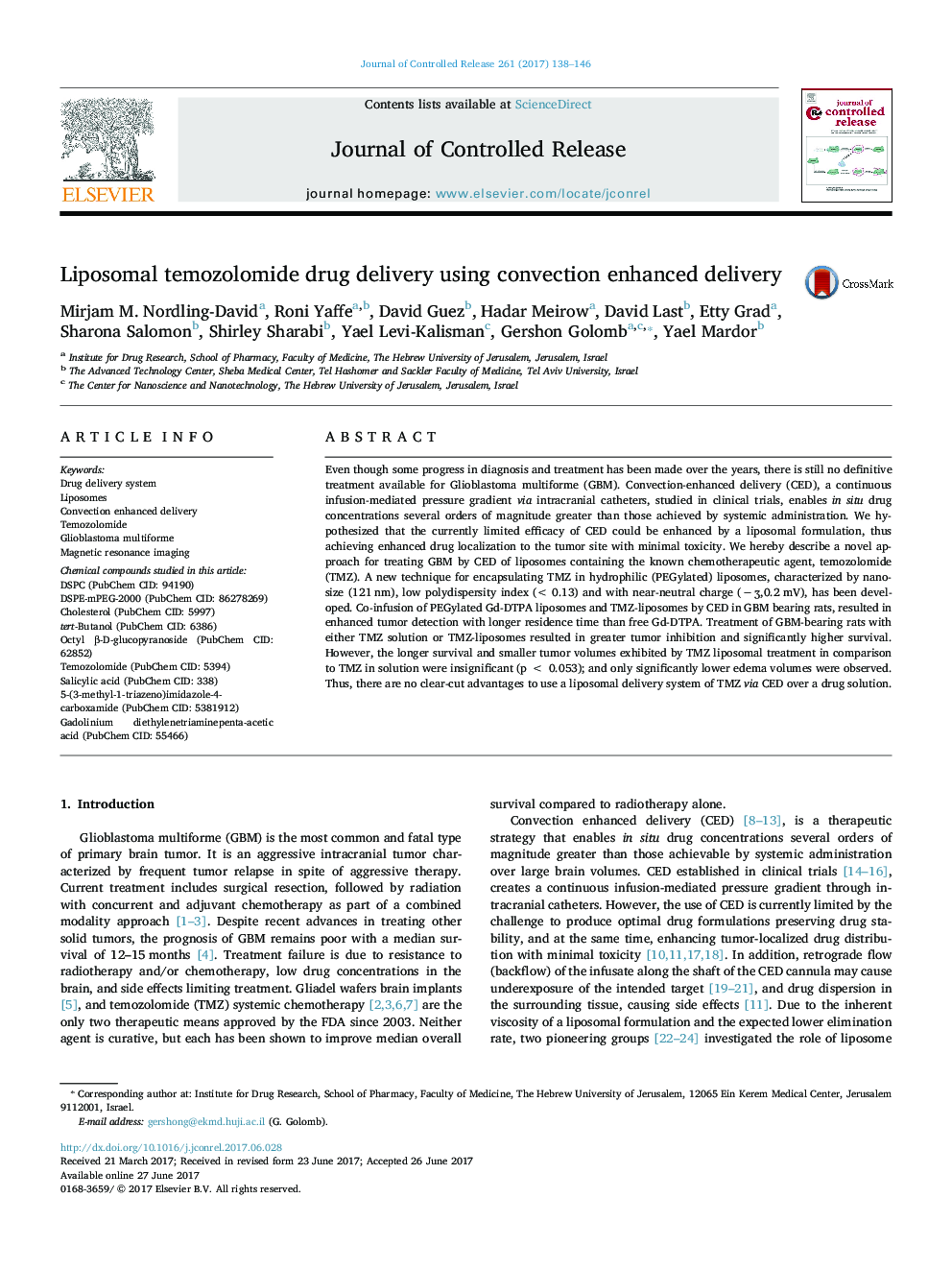| Article ID | Journal | Published Year | Pages | File Type |
|---|---|---|---|---|
| 5433429 | Journal of Controlled Release | 2017 | 9 Pages |
Even though some progress in diagnosis and treatment has been made over the years, there is still no definitive treatment available for Glioblastoma multiforme (GBM). Convection-enhanced delivery (CED), a continuous infusion-mediated pressure gradient via intracranial catheters, studied in clinical trials, enables in situ drug concentrations several orders of magnitude greater than those achieved by systemic administration. We hypothesized that the currently limited efficacy of CED could be enhanced by a liposomal formulation, thus achieving enhanced drug localization to the tumor site with minimal toxicity. We hereby describe a novel approach for treating GBM by CED of liposomes containing the known chemotherapeutic agent, temozolomide (TMZ). A new technique for encapsulating TMZ in hydrophilic (PEGylated) liposomes, characterized by nano-size (121 nm), low polydispersity index (< 0.13) and with near-neutral charge (â Ê,0.2 mV), has been developed. Co-infusion of PEGylated Gd-DTPA liposomes and TMZ-liposomes by CED in GBM bearing rats, resulted in enhanced tumor detection with longer residence time than free Gd-DTPA. Treatment of GBM-bearing rats with either TMZ solution or TMZ-liposomes resulted in greater tumor inhibition and significantly higher survival. However, the longer survival and smaller tumor volumes exhibited by TMZ liposomal treatment in comparison to TMZ in solution were insignificant (p < 0.053); and only significantly lower edema volumes were observed. Thus, there are no clear-cut advantages to use a liposomal delivery system of TMZ via CED over a drug solution.
Graphical abstractDownload high-res image (360KB)Download full-size image
